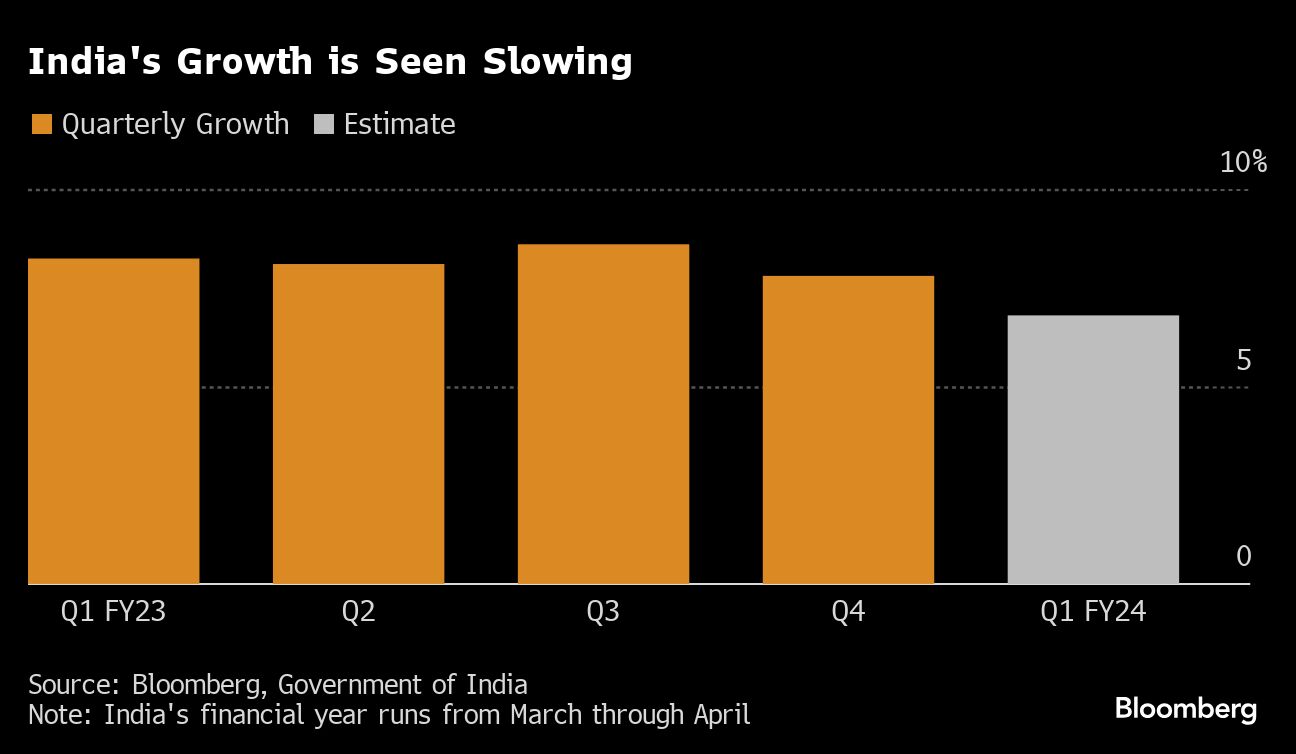
(Aug 30): India’s rapidly growing economy is facing a number of risks in the coming months that’s prompting economists to downgrade their forecasts and call for interest-rate cuts.
Official data on Friday will likely show growth moderated last quarter from near-8% pace previously, largely due to a slowdown in government spending before the elections. Recent indicators show consumer sentiment is waning and rural spending still hasn’t recovered to pre-Covid levels. A looming slowdown in the global economy is another major risk to the outlook.
Goldman Sachs Group Inc has already trimmed India’s growth forecast for the current calendar year by 20 basis points to 6.7%, while Bloomberg Economics lowered its projection for the fiscal year through March 2025 to 6.8% from 7.2%.
That’s putting pressure on the Reserve Bank of India (RBI) to begin cutting interest rates after staying on hold for more than 18 months. The central bank has been reluctant to pull the trigger because of inflation risks, which are dominated by high food prices.
Gross domestic product (GDP) likely grew 6.8% last quarter from a year earlier, a Bloomberg survey of economists showed. That would be the slowest pace in five quarters and lower than the central bank’s projection of 7.1% for the period. The economy grew 7.8% the January-March quarter.
The government is scheduled to release the data at 5.30pm local time on Friday. Here’s a look at some of the key issues that could affect the figures:
Consumer spending remains subdued
Businesses continue to hold back on investment, while consumer sentiment fell for a second consecutive month in July, curbing the outlook for private consumption, which makes up nearly 60% of India’s GDP.
Spending in rural areas, where about 65% of India’s population live, remains subdued, with a Citigroup Inc index that tracks rural consumption showing spending hasn’t yet reached pre-Covid levels.
Business profits are taking a knock, which means lower investment and growth going forward.
There is a “risk that corporate sector profitability remains muted even in subsequent quarters, led by higher input costs and a reduction in demand”, Kaushik Das, an economist at Deutsche Bank AG, wrote in a note. If that were to happen, growth could be lower than the central bank’s forecast of more than 7% expansion in each quarter of the current fiscal year, he wrote.
Government investment slows before election
India’s government curbed investment and construction in the run-up to the elections, which ran for more than six weeks until June 1. The vote saw Prime Minister Narendra Modi returning to office on promises of boosting the economy, although his party lost its outright majority in the lower house of Parliament.
The government spent 16.3% of its budgeted capital spending in the first quarter of the fiscal year, compared with 27.8% for the same period in the previous year.
GDP distortion from tax category should ease
India’s growth of 8.4% and 7.8% in the previous two quarters was partly distorted by the net indirect tax category used to calculate GDP. An alternate measure of growth — gross value added, or GVA, which strips out that distortion — showed more moderate expansion of close to 6%.
Economists say the divergence between GDP and GVA won’t be as evident in Friday’s data.
Teresa John, an economist at Nirmal Bang Institutional Equities, estimates a gap of 20 to 25 basis points this year, compared with 93 basis points last year. A Bloomberg survey of economists expects GVA grew 6.4% in the April-June period from a year earlier.
Agriculture benefiting from better rainfall
Surplus monsoon rains, which irrigate half of the nation’s farmland, will likely provide some relief for the agriculture sector and aid rural India. A recovery in rural areas will boost incomes while also bringing down food inflation in the coming months, Sameer Narang, an economist at ICICI Bank Ltd, said.
Uploaded by Tham Yek Lee

